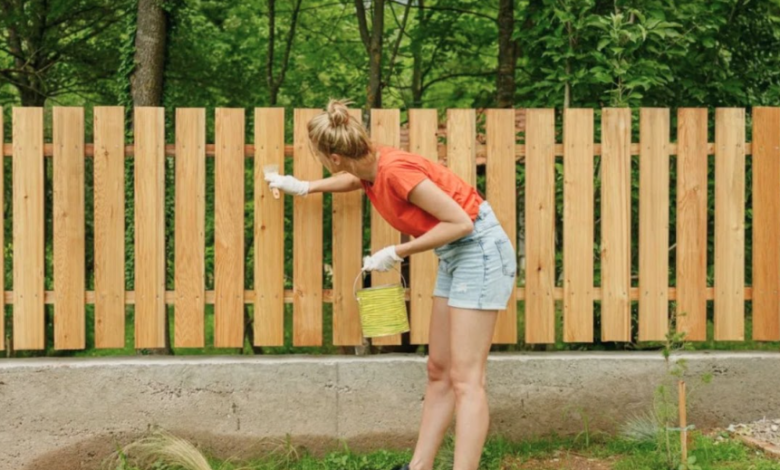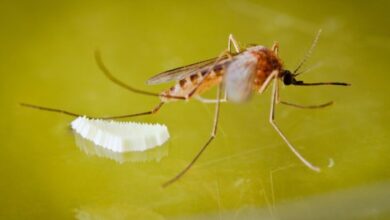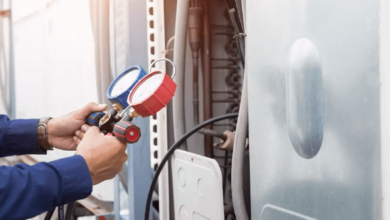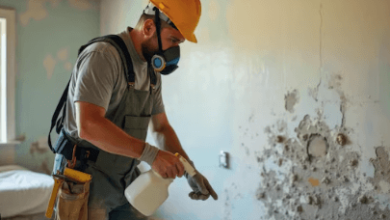How to Choose the Best Fence for Your Home

Choosing the right fence for your home is about more than just marking property lines — it’s about enhancing beauty, privacy, and security. Homeowners in the Charleston Tri-County area, including Isle of Palms, are increasingly investing in fencing solutions that not only protect their property but also complement their outdoor spaces. Whether you’re drawn to the classic charm of wood, the sleek durability of aluminum, or the natural elegance of living fences, there’s an option for every style and budget.
Working with a trusted local expert like FenceCraft ensures your fencing project is designed and installed with precision, long-lasting quality, and Southern craftsmanship that stands up to the Lowcountry climate.
Why Installing a Fence Is a Smart Investment
Before diving into fence types, it’s important to understand why homeowners invest in fences in the first place. A well-built fence can:
Increase Property Value – A high-quality fence adds curb appeal and can raise your home’s resale value.
Enhance Security and Privacy – Fences provide a physical barrier that deters trespassers and shields your family from unwanted views.
Create Defined Outdoor Spaces – Fences help define gardens, pools, and play areas, giving structure to your property.
Protect Pets and Children – A secure fence keeps loved ones and pets safely within your yard.
Reduce Noise and Wind – Certain fence types help block street noise and coastal winds — perfect for homes near the beach.
With these benefits in mind, choosing the right material becomes essential to balancing function, aesthetics, and maintenance.
1. Wooden Fences: Classic Charm and Versatility
Wooden fences remain one of the most popular choices among homeowners — and for good reason. They offer a timeless look, incredible design flexibility, and a warm, natural aesthetic that fits almost any landscape.
Benefits of Wooden Fences
Customizable Designs: Whether you prefer picket, privacy, or shadowbox styles, wood allows endless customization.
Natural Aesthetic: Wood blends beautifully with gardens, trees, and coastal landscapes.
Easy to Repair: Individual boards can be replaced without needing to overhaul the entire fence.
Eco-Friendly Options: When sourced responsibly, wood is a renewable and sustainable fencing material.
See also: Why Precision Tools Matter in Home Improvement Projects
Best Woods for Coastal Climates
In Charleston’s humid, salty air, durability is key. Cedar and pressure-treated pine are top choices for their natural resistance to decay and pests. Cedar also offers rich color tones and a pleasant aroma that enhance outdoor living spaces.
Maintenance Tips
Regular maintenance is essential. Applying sealants or stains every few years helps protect wood from moisture, sun, and insects. For homeowners seeking a rustic yet refined look, a wooden fence is both functional and visually appealing.
2. Aluminum Fences: Strength, Style, and Low Maintenance
If you’re seeking a durable, modern, and low-maintenance fencing solution, aluminum fencing may be the perfect fit. It combines elegance with strength, making it ideal for homeowners who want lasting value with minimal upkeep.
Advantages of Aluminum Fencing
Corrosion Resistant: Aluminum doesn’t rust, making it excellent for coastal areas like Isle of Palms.
Low Maintenance: Unlike wood, it doesn’t need staining, painting, or sealing.
Elegant Appearance: Aluminum fences mimic the look of wrought iron but are lighter and more affordable.
Security Without Obstruction: Perfect for homeowners who want security without blocking views of their surroundings.
Ideal Uses for Aluminum Fences
Pool Enclosures: Safe, stylish, and compliant with safety codes
Property Perimeters: Define boundaries while maintaining open views.Decorative Borders: Enhance gardens, patios, and driveways with ornamental designs
Longevity and Care
Aluminum fences can last decades with little to no maintenance. An occasional rinse to remove salt and debris keeps them looking brand new. Their ability to resist corrosion makes them a top choice for coastal South Carolina homeowners.
3. Living Fences: A Green and Sustainable Alternative
For homeowners looking to merge beauty with sustainability, living fences — also called green or natural fences — are an excellent choice. These fences are made of shrubs, hedges, or small trees that grow close together to form a lush, natural barrier.
Benefits of Living Fences
Eco-Friendly: Living fences improve air quality and support local wildlife.
Natural Privacy: Dense greenery provides privacy without feeling closed off.
Visual Appeal: A vibrant hedge enhances landscaping and softens property edges.
Noise Reduction: Thick foliage naturally absorbs sound, creating a peaceful outdoor retreat.
Best Plants for the Lowcountry Climate
In the Charleston region, choose salt-tolerant, hardy plants such as:
Wax Myrtle – fast-growing and low maintenance.
Holly or Ligustrum – ideal for dense, evergreen barriers.
Bamboo (clumping varieties) – offers quick growth and exotic appeal.
Considerations for Living Fences
While beautiful, living fences require patience and care. Regular pruning and watering are essential, and it may take time for plants to grow into full coverage. However, once established, they offer a living, breathing addition to your outdoor space that evolves beautifully with the seasons.
How to Choose the Right Fence Material
When selecting your fence, consider these key factors to ensure you make the best decision for your property:
Purpose – Do you need privacy, security, decoration, or pet safety?
Budget – Wooden fences are cost-effective upfront, while aluminum offers long-term savings through durability.
Aesthetics – Match your fence to your home’s style and landscaping.
Maintenance Commitment – Wood requires regular care; aluminum and living fences need less frequent attention.
Local Regulations – Always check city or HOA guidelines before installing any fence type.
Each fence type brings unique strengths — what matters most is aligning your choice with your home’s needs and your lifestyle.
Combining Function and Style
One growing trend is mixing materials for a custom look that offers the best of both worlds. For example:
Wood and Metal: Combine wooden panels with aluminum framing for durability and contrast.
Wood and Greenery: Use wooden fences as support for vines and climbing plants.
Aluminum and Glass: Create contemporary barriers that maintain visibility while ensuring safety.
These hybrid designs allow homeowners to express creativity while enhancing both curb appeal and property value.
Fencing for Coastal Homes: What to Know
Homes in the Charleston Tri-County area face unique environmental challenges — from salty air to high humidity and tropical storms. Choosing fencing materials that withstand these conditions ensures longevity and performance.
Key Tips for Coastal Fencing
Opt for rust-resistant materials like aluminum
Apply protective coatings to wooden fences to prevent moisture damage.
Use stainless steel fasteners and hardware to resist corrosion.
Consider wind-resistant designs such as spaced pickets to reduce pressure during storms.
Partnering with experienced professionals familiar with local conditions ensures your fence not only looks beautiful but also stands the test of time.
Professional Installation Matters
No matter which type of fence you choose, proper installation is crucial. A professional fence company can assess your property’s terrain, ensure accurate measurements, and install the fence securely. Skilled installers use the right materials and methods to handle the region’s soil and weather challenges, ensuring your investment lasts for years.
When working with professionals like FenceCraft, you gain access to expert advice, quality craftsmanship, and a wide selection of fencing options tailored to local needs.
Sustainable and Eco-Friendly Fencing Practices
Modern homeowners are increasingly conscious of their environmental impact. Fortunately, there are several ways to make your fencing project more sustainable:
Choose FSC-certified wood from responsibly managed forests.
Recycle old fencing materials whenever possible.
Use eco-friendly stains and sealants that are low in volatile organic compounds (VOCs).
Consider native plants for living fences to promote biodiversity and reduce maintenance needs
Sustainability doesn’t mean compromising on style — it means building smarter, greener, and with long-term benefits in mind.
Final Thoughts
A fence does more than enclose your yard — it defines your home’s character, provides peace of mind, and enhances your connection to outdoor living. Whether you’re drawn to the natural warmth of wood, the sleek strength of aluminum, or the eco-friendly beauty of a living fence, the right choice can transform your property.
For expert advice and professional installation in the Charleston area, turn to fencecraftsc.com. With years of experience, craftsmanship, and dedication to quality, FenceCraft helps homeowners create beautiful, durable fences designed to last — and made to impress.





